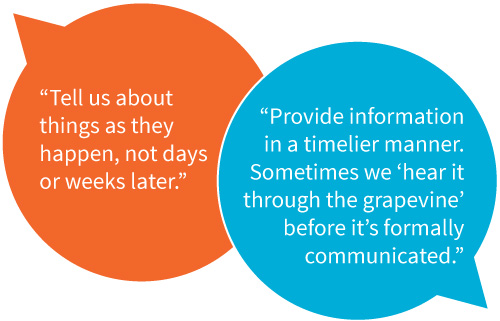
Yes, employees pay attention to what you communicate, but they also care a lot about when they receive critical information. Their preference? Information that’s delivered “just in time”—right when they need to act and before hearing it from external sources.
Here’s what employees suggest:

Here are five approaches to timely communication:
|
|
Focus on what employees need to do—and when they need to do it Here’s something that may surprise you: The biggest timing mistake organizations make is actually communicating too much, too soon. Instead, focus on the employee experience. When do employees need a heads up? When do they really need to start paying attention? When are deadlines they need to meet? |
|
|
Plan ahead It’s true that surprises come up, but 80% of what you need to communicate is expected. So there’s no excuse not to communicate with enough time for people to take action—but not too early that they file it for later and forget about it. Be sure to keep holidays and weekends in mind. |
|
|
Include deadlines When it’s time for your readers to do something, let them know! Be sure to include a deadline and enough time for them to complete it. |
|
|
Provide updates Create and follow a communication timeline to notify employees when more information will be available—even if it’s an estimate (e.g., “shortly” or “within a few weeks”). Try sending a series of short, targeted e-blasts just in time. |
|
|
Be transparent Provide employees with contact information they can use to ask questions and get more information. |








